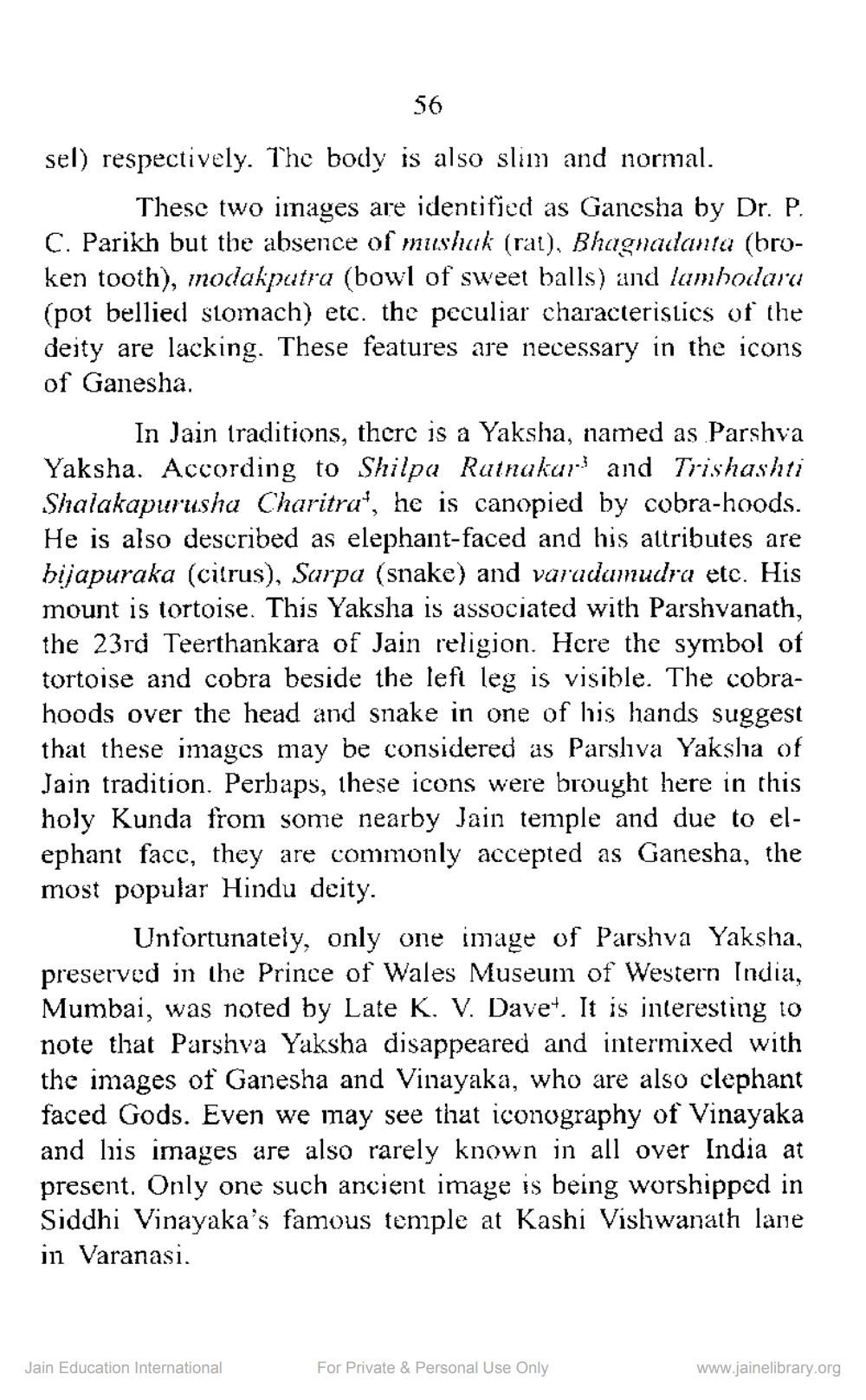________________
56
sel) respectively. The body is also slim and normal.
These two images are identified as Gancsha by Dr. P. C. Parikh but the absence of mushuk (rat), Bhagnadanta (broken tooth), modakputra (bowl of sweet balls) and lamhodaru (pot bellied stomach) etc. the peculiar characteristics of the deity are lacking. These features are necessary in the icons of Ganesha.
In Jain traditions, there is a Yaksha, named as Parshva Yaksha. According to Shilpa Ratnakur! and Trishashti Shalakapurusha Charitru', he is canopied by cobra-hoods. He is also described as elephant-faced and his attributes are bijapuraka (citrus), Sarpa (snake) and varadumudra etc. His mount is tortoise. This Yaksha is associated with Parshvanath, the 23rd Teerthankara of Jain religion. Here the symbol of tortoise and cobra beside the left leg is visible. The cobrahoods over the head and snake in one of his hands suggest that these images may be considered as Parsliva Yaksha of Jain tradition. Perhaps, these icons were brought here in this holy Kunda from some nearby Jain temple and due to elephant face, they are commonly accepted as Ganesha, the most popular Hindu deity.
Unfortunately, only one image of Parshva Yaksha, preserved in the Prince of Wales Museum of Western India, Mumbai, was noted by Late K. V. Davet. It is interesting to note that Parshva Yaksha disappeared and intermixed with the images of Ganesha and Vinayaka, who are also clephant faced Gods. Even we may see that iconography of Vinayaka and his images are also rarely known in all over India at present. Only one such ancient image is being worshipped in Siddhi Vinayaka's famous temple at Kashi Vishwanath lane in Varanasi.
Jain Education International
For Private & Personal Use Only
www.jainelibrary.org




